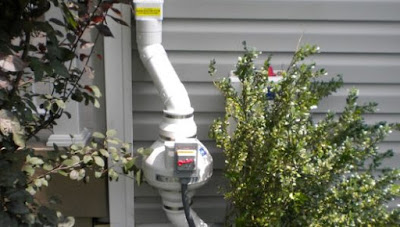Radon-Rid Explains Types of Remediation Systems
Radon poses a serious threat to thousands of Americans, being the second-leading cause of lung cancer. That threat is the reason that getting your home tested by a professional is essential. But what about removing or preventing radon from entering your home? Radon-Rid explains the various types of remediation systems and how they work.
What Are The Types of Remediation Systems?
Sub-Slab Depressurization
Sub-slab depressurization (also known as sub-slab suction) is a method that removes the radon-laden air from beneath the foundation, which occurs as a natural result of uranium and thorium presence, and vents the gas outside. A pipe with a fan is installed in the foundation and runs all the way up to the roof of the house. This pipe can be either external and viewable from the outside, or internal where only a small section of the pipe in the attic is visible from the outside.
This method uses active (ASSD) and passive (PSSD) remediation systems. Both of these methods work in the same way. However, the passive system has no fan and is often built as a preventive measure in new houses. This type can be converted to an active system if needed at a later date. The active system is considered to be more effective and common than the passive system.
Sub-Membrane Ventilation
Sub-membrane ventilation is similar to the sub-slab depressurization method but is more effective in removing radon in houses or buildings with basements or crawlspaces and basements. A high-density polyethylene sheet barrier over the soil collects the gas and acts as a membrane. We then insert a pipe or drain mat with a fan, creating a vacuum and ventilating the radon to the outdoors.
Block Wall Suction
Block wall suction is a method used for homes that have hollow foundation walls. The system involves the use of a fan and ductwork to draw the air from the hollow inner cavities of the concrete block wall. Radon gas enters basements because the air pressure in the house is lower than the air pressure in the ground. The block wall suction makes the air pressure in the block wall lower than in the basement and works to pull radon from the soil before the gas enters the house.
Call Radon-Rid for Effective Radon Remediation
Radon-Rid, LLC focuses primarily on customer safety and satisfaction and encourages customers to look no further when considering a radon remediation contractor. The customers come first, and Radon-Rid is willing to provide local referrals from other homeowners who have hired our services for radon testing and remediation. Contact us today to learn about the types of remediation systems, cost, and to set up a consultation.
It is republished with permission from author.



Mga Komento
Mag-post ng isang Komento